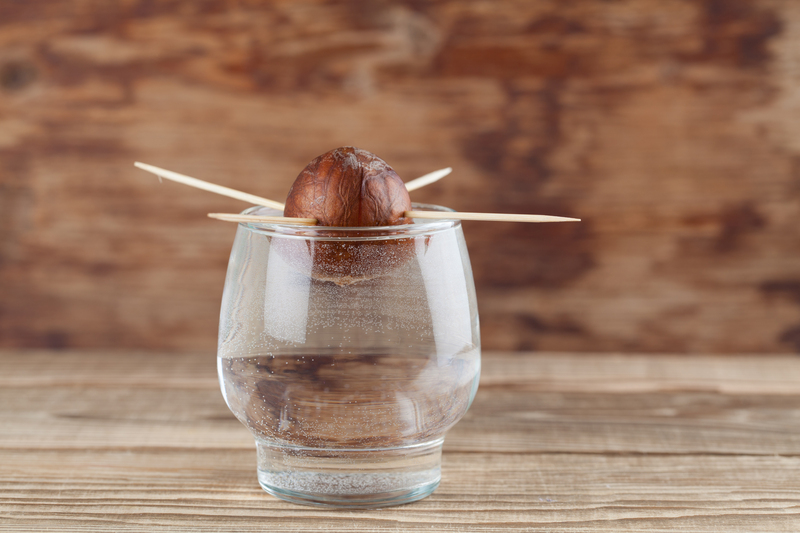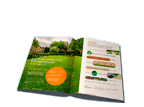How to Spot Grub Damage in Yards
Posted on 03/07/2025
Grubs are the larval stage of various beetles, including Japanese beetles, June beetles, and European chafers. They live in the soil and primarily feed on the roots of grasses and plants. This feeding behavior can cause severe damage to lawns and gardens. Knowing how to spot grub damage in yards is essential for maintaining healthy, vibrant green spaces.
Understanding Grubs
Before diving into how to identify grub damage, it is helpful to understand what grubs are and their lifecycle. These pests typically have a C-shaped, creamy-white body and a brown head. They hatch from eggs laid by adult beetles in late spring to early summer. Grubs present in the soil feed actively from late summer through fall and can cause significant damage during this period.

Signs of Grub Damage
Grub damage can manifest in several ways, and recognizing these signs early is crucial for controlling the infestation. Here are some common indicators:
Discolored or Dying Grass
The most apparent sign of grub damage is patches of discolored or dying grass. The grass may appear yellow or brown, indicating that it is under stress. This discoloration occurs because grubs feed on the roots, cutting off the plant's nutrient and water supply.
Spongy Turf
Another reliable sign of grub activity is a spongy-feeling turf. Because the grubs eat the roots, the sod becomes loose and can feel like a sponge when walked upon. In advanced cases, you may even be able to lift the turf like a carpet, revealing the grubs underneath.
Increased Animal Activity
Wildlife such as birds, raccoons, skunks, and moles often dig up lawns in search of grubs. Increased animal activity and small, unearthed patches of soil can signal a grub problem. These animals are attracted to lawns with a high grub population as it provides a readily available food source.
Thinning Grass
If the lawn appears to be thinning out for no apparent reason, grubs might be to blame. Unlike other pests that attack leaves or stems, grubs specifically target roots, leading to a weakened plant that cannot uptake water and nutrients efficiently. This thinning is often diffuse and can spread rapidly if untreated.
Confirming Grub Presence
While visual signs can indicate a grub problem, it's essential to confirm their presence through more direct methods. Here's how:
Soil Sampling
One of the most effective ways to confirm grub presence is through soil sampling. Using a shovel or spade, dig up small sections of your lawn, particularly in areas showing signs of damage. Check the root zone of these samples for grubs. Finding more than five grubs per square foot suggests a significant infestation.
Float Test
Another method for detecting grubs involves the float test. Remove a small section of sod and place it in a bucket of water. If grubs are present, they will float to the surface after a few minutes. This method is less labor-intensive and can quickly provide a visual confirmation.
Preventive Measures and Solutions
Once you've identified a grub problem, addressing it promptly is crucial. Several preventive measures and solutions can help manage grub populations and repair damaged lawns.
Beneficial Nematodes
One natural solution involves using beneficial nematodes, microscopic worms that infect and kill grubs. These nematodes can be applied to your lawn to help reduce grub populations effectively. They are environmentally friendly and safe for pets and humans.
Grub-Resistant Grass Varieties
Consider planting grub-resistant grass varieties as a long-term measure. Some grass types are less susceptible to grub damage, reducing the likelihood of future infestations. Varieties like Tall fescue and Perennial ryegrass are more resistant to grubs.
Chemical Treatments
If the infestation is severe, chemical treatments may be necessary. Insecticides specifically designed to target grubs can be applied to the affected areas. Always follow the manufacturer's instructions and consider consulting a professional for the best results.

Repairing Grub Damage
After addressing the grub problem, repairing the damage is the next step. This process involves several stages, from reseeding to proper lawn care practices.
Reseeding or Sod Replacement
In areas where the grass has been severely damaged, reseeding may be necessary. Remove the dead grass and prepare the soil by tilling and adding compost or fertilizer. Once the soil is ready, spread grass seed and keep it moist until germination. For more immediate results, sod replacement may be a better option.
Regular Watering and Feeding
After reseeding or laying new sod, ensure that your lawn receives adequate water and nutrients. Regular watering and feeding will help the new grass establish a strong root system, making it less susceptible to future grub damage.
Monitoring and Maintenance
Finally, regular monitoring and maintenance are crucial for preventing future grub infestations. Routine inspections, proper lawn care practices, and timely treatment applications can keep your lawn healthy and grub-free.
Conclusion
Spotting grub damage in yards requires keen observation and a proactive approach. Discolored or dying grass, spongy turf, increased animal activity, and thinning grass are all indicators that grubs might be present. Confirm their presence through soil sampling or the float test and take appropriate measures to manage the infestation.
By implementing preventive measures like using beneficial nematodes and planting grub-resistant grass, you can reduce the likelihood of future infestations. Proper lawn care practices, including regular watering, feeding, and monitoring, will ensure that your lawn remains healthy and vibrant. With these strategies, you can effectively spot and address grub damage, keeping your yard in top condition.






 Certified and experienced landscapers
Certified and experienced landscapers



 Get a Quote
Get a Quote